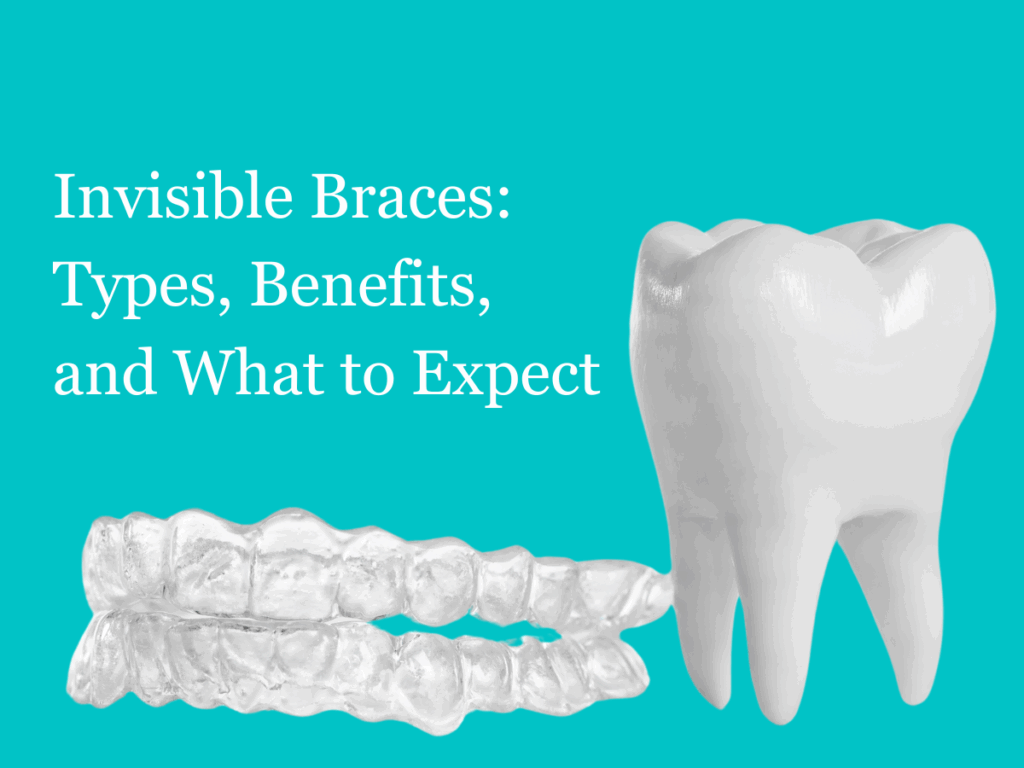Remember when braces meant a mouth full of metal that announced to the world you were “fixing” your teeth? Those days are rapidly fading into orthodontic history. But have you considered that invisible braces aren’t just about hiding your treatment—they’re completely changing who gets treatment in the first place?
The Power of Being Unseen
Let’s talk straight: visible braces force you to wear your medical treatment on display. Every smile, laugh, and conversation comes with an unspoken subtitle: “Work in Progress.” But invisible options flip this narrative entirely.
“The day I got my clear aligners was the first day I stopped feeling self-conscious about my smile—not because my teeth were suddenly straight, but because no one knew I was fixing them,” a friend told me recently. Isn’t that ironic? The treatment itself provided confidence before the results even appeared.
Let’s discuss the different types of invisible braces
Clear Aligners: The Plastic Revolution
Clear aligners—those transparent trays you swap out every couple of weeks—have changed the game completely. But their true innovation isn’t just about being see-through.
Think about it: with traditional braces, your orthodontist controls your treatment. With aligners, you’re in charge. You decide when to remove them, how strictly to follow the regimen, and how your treatment progresses. It’s a fundamental transfer of power from doctor to patient. And let’s be honest—this freedom can be both liberating and challenging. Those aligners only work if you wear them 20+ hours daily. Are you ready for that level of discipline?
Ceramic Braces: The Middle Path
Ceramic braces use tooth-colored or clear brackets instead of metal ones. They’re the compromise option—more visible than aligners but less noticeable than traditional metal braces.
Here’s what most discussions miss: ceramic braces reveal our complicated relationship with medical treatments. We want the proven effectiveness of traditional methods without their visibility. We want to change without appearing to be changing. “I chose ceramic because I needed serious correction, but couldn’t handle everyone commenting on my braces,” a teacher explained to me. “With ceramics, only the students in the front row ever noticed.”
Lingual Braces: The Ultimate Hideout
The most radical invisible option doesn’t try to blend in—it hides completely. Lingual braces attach to the back surfaces of your teeth, making them truly invisible to others.
Why don’t more people choose this option? Simple: they’re typically more expensive, can be more uncomfortable (they’re right against your tongue), and require specialized orthodontists to install and adjust them. But think about what lingual braces represent: they’re the only option that truly separates the experience of having braces from being perceived as having braces. Isn’t that distinction worth considering?
Self-Ligating Systems: The Understated Option
Self-ligating braces deserve more attention in the invisible braces conversation. While not completely invisible, they eliminate the need for colored elastic bands that make traditional braces so noticeable.
These systems use specialized clips to hold the archwire in place, creating a more streamlined appearance overall. “Self-ligating braces are the quieter revolution in orthodontics,” one specialist told me. “They’re not trying to hide completely—they’re just trying to be less intrusive while maintaining mechanical advantages.” The reduced profile and elimination of colourful bands create a significant aesthetic improvement without sacrificing treatment effectiveness.
The Cost Reality Check
Let’s address the elephant in the room: invisible usually means expensive. Each step toward complete discretion generally comes with a higher price tag.
But this gap is narrowing. Direct-to-consumer clear aligner companies have disrupted pricing models. Dental insurance increasingly covers portions of invisible treatment. The invisible advantage is becoming more accessible. What was once a luxury option is increasingly becoming standardized care, particularly as manufacturing processes improve and competition drives innovation.
Beyond Straight Teeth
As we witness this orthodontic revolution, consider this thought: these “alternative” braces are quickly becoming the new standard. Kids now specifically ask for clear aligners instead of traditional braces.
Getting invisible braces treatment isn’t just changing smiles—it’s challenging how we think about medical treatments altogether. Why should any treatment announce itself to the world if it doesn’t need to? Maybe the most important question isn’t which invisible option to choose, but why visibility in treatment was ever the standard in the first place. What other medical interventions might benefit from going invisible? And how might that reshape who seeks treatment altogether?






